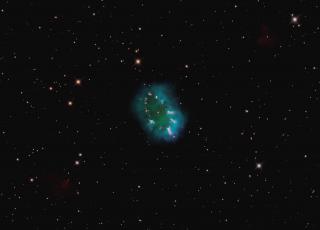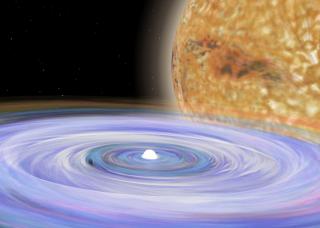Bibcode
Barentsen, G.; Farnhill, H. J.; Drew, J. E.; González-Solares, E. A.; Greimel, R.; Irwin, M. J.; Miszalski, B.; Ruhland, C.; Groot, P.; Mampaso, A.; Sale, S. E.; Henden, A. A.; Aungwerojwit, A.; Barlow, M. J.; Carter, P. J.; Corradi, R. L. M.; Drake, J. J.; Eislöffel, J.; Fabregat, J.; Gänsicke, B. T.; Gentile Fusillo, N. P.; Greiss, S.; Hales, A. S.; Hodgkin, S.; Huckvale, L.; Irwin, J.; King, R.; Knigge, C.; Kupfer, T.; Lagadec, E.; Lennon, D. J.; Lewis, J. R.; Mohr-Smith, M.; Morris, R. A. H.; Naylor, T.; Parker, Q. A.; Phillipps, S.; Pyrzas, S.; Raddi, R.; Roelofs, G. H. A.; Rodríguez-Gil, P.; Sabin, L.; Scaringi, S.; Steeghs, D.; Suso, J.; Tata, R.; Unruh, Y. C.; van Roestel, J.; Viironen, K.; Vink, J. S.; Walton, N. A.; Wright, N. J.; Zijlstra, A. A.
Bibliographical reference
Monthly Notices of the Royal Astronomical Society, Volume 444, Issue 4, p.3230-3257
Advertised on:
11
2014
Citations
164
Refereed citations
147
Description
The INT/WFC Photometric Hα Survey of the Northern Galactic Plane
(IPHAS) is a 1800 deg2 imaging survey covering Galactic
latitudes |b| < 5° and longitudes ℓ = 30°-215° in the
r, i, and Hα filters using the Wide Field Camera (WFC) on the
2.5-m Isaac Newton Telescope (INT) in La Palma. We present the first
quality-controlled and globally calibrated source catalogue derived from
the survey, providing single-epoch photometry for 219 million unique
sources across 92 per cent of the footprint. The observations were
carried out between 2003 and 2012 at a median seeing of 1.1 arcsec
(sampled at 0.33 arcsec pixel-1) and to a mean 5σ depth
of 21.2 (r), 20.0 (i), and 20.3 (Hα) in the Vega magnitude system.
We explain the data reduction and quality control procedures, describe
and test the global re-calibration, and detail the construction of the
new catalogue. We show that the new calibration is accurate to 0.03 mag
(root mean square) and recommend a series of quality criteria to select
accurate data from the catalogue. Finally, we demonstrate the ability of
the catalogue's unique (r - Hα, r - i) diagram to (i) characterize
stellar populations and extinction regimes towards different Galactic
sightlines and (ii) select and quantify Hα emission-line objects.
IPHAS is the first survey to offer comprehensive CCD photometry of point
sources across the Galactic plane at visible wavelengths, providing the
much-needed counterpart to recent infrared surveys.
Related projects

Bipolar Nebulae
This project has three major objectives: 1) To determine the physico-chemical characteristics of bipolar planetary nebulae and symbiotic nebulae, to help understanding the origin of bipolarity and to test theoretical models, mainly models with binary central stars, aimed at explaining the observed morphology and kinematics. 2) To study the low
Antonio
Mampaso Recio

Binary Stars
The study of binary stars is essential to stellar astrophysics. A large number of stars form and evolve within binary systems. Therefore, their study is fundamental to understand stellar and galactic evolution. Particularly relevant is that binary systems are still the best source of precise stellar mass and radius measurements. Research lines
Pablo
Rodríguez Gil